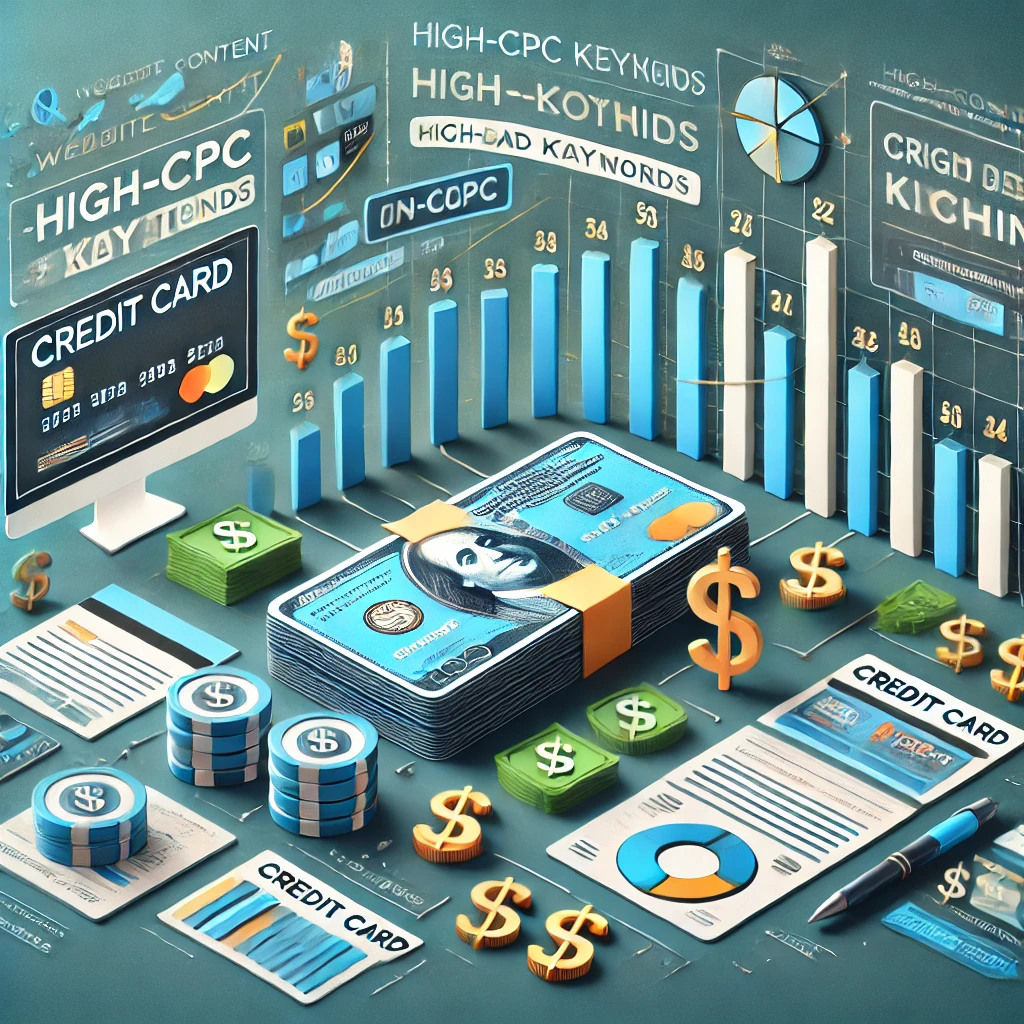The credit card niche is one of the highest-paying sectors in Google AdSense, thanks to its competitive keywords and high-intent audience. By strategically targeting high-CPC keywords and optimizing your website’s content and ads, you can boost your AdSense earnings. In this article, we’ll walk through actionable steps to create a high-performing site in the credit card niche.
1. Focus on High-CPC Credit Card Keywords
Start by identifying high-CPC keywords related to credit cards. These keywords are what advertisers are willing to pay more for, and targeting them effectively will increase your potential AdSense revenue. Some examples include:
- “Best credit cards for rewards”
- “Credit card for bad credit”
- “0% APR credit cards”
- “Credit card debt consolidation”
By using tools like Google Keyword Planner or SEMrush, you can research high-CPC keywords and incorporate them naturally into your articles. Long-tail keywords, such as “best credit cards for cashback in 2024,” are often less competitive and can still attract high-intent traffic.
2. Create Detailed, SEO-Optimized Content
The foundation of any high-earning AdSense website is valuable, SEO-optimized content. Your articles need to be informative, engaging, and packed with relevant keywords that rank in search engines. For example, if you’re writing an article titled “Top 10 Best Credit Cards for Travel,” make sure it includes:
- Comparisons of credit card rewards (e.g., cashback, miles)
- Specific examples of popular travel credit cards
- Tips for choosing the right card based on user needs
The goal is to answer users’ questions thoroughly, which increases time spent on the page—ultimately improving your chances of ad clicks.
3. Optimize Ad Placement for Maximum Clicks
Positioning your ads strategically can make a huge difference in your earnings. The best-performing ad placements for the credit card niche include:
- Above the fold: Ads visible immediately without scrolling tend to get more clicks.
- In-content ads: Placing ads between paragraphs or near key sections ensures that users see them while reading.
- Sidebar ads: These can be placed alongside your primary content for additional visibility.
Use responsive ad formats that adjust to various screen sizes and try A/B testing different ad placements to see which ones generate the most clicks.
4. Write for High-Intent Visitors
To earn from high-CPC keywords, your content must attract high-intent visitors—those who are actively looking for credit card solutions. Articles like “Best Credit Cards for Bad Credit” or “How to Get a Credit Card with No Credit History” will attract readers who are close to making a decision and are more likely to click on relevant ads.
High-intent traffic can be boosted through:
- SEO: Focus on ranking for buying-intent keywords, like “apply for credit cards.”
- Email marketing: Capture visitor emails and encourage return visits through newsletters focused on credit card tips and news.
5. Build Trust with Engaging, Long-Form Content
Creating long-form content (1,500+ words) helps build trust with your audience, increases dwell time on your site, and ranks better on Google. For example:
- A comprehensive guide on “How to Choose the Best Credit Card for Your Lifestyle” could break down different types of credit cards (e.g., cashback, travel rewards, balance transfers) and help users make an informed decision.
Not only does this drive higher engagement, but it also increases the likelihood of users clicking on relevant ads.
6. Increase Page Speed and Mobile Usability
A fast, mobile-optimized website is crucial for keeping visitors on your page. Slow-loading websites lead to higher bounce rates, which reduces the chance of ad clicks. Use tools like Google PageSpeed Insights to assess your site’s speed and identify areas for improvement.
Moreover, with a growing number of users searching for credit cards on their mobile devices, ensuring your website is mobile-friendly is essential. Implement a responsive design so your site looks and performs well across all devices.
7. Build Backlinks to Boost SEO
Backlinks from reputable websites increase your site’s authority and improve your search rankings, which can lead to more organic traffic. Use tactics like:
- Guest posting on finance and credit card blogs
- Collaborating with influencers in the personal finance space
- Creating linkable assets such as in-depth guides and infographics
By boosting your website’s domain authority, you’ll attract more visitors, increasing the likelihood of clicks on high-CPC ads.
8. Track and Adjust for Better Performance
Finally, make sure to regularly analyze your website’s performance using Google Analytics and AdSense Reports. Track which pages generate the most clicks and adjust your ad placements, content strategy, and keyword focus accordingly. Over time, optimizing based on performance data will help you maximize your AdSense revenue.
Conclusion
The credit card niche offers tremendous potential for earning high CPC revenue with AdSense. By focusing on high-CPC keywords, creating detailed content, and optimizing your site for ads and SEO, you can significantly increase your earnings. With ongoing performance tracking and a commitment to delivering value to your audience, your credit card content site could become a lucrative source of passive income.



